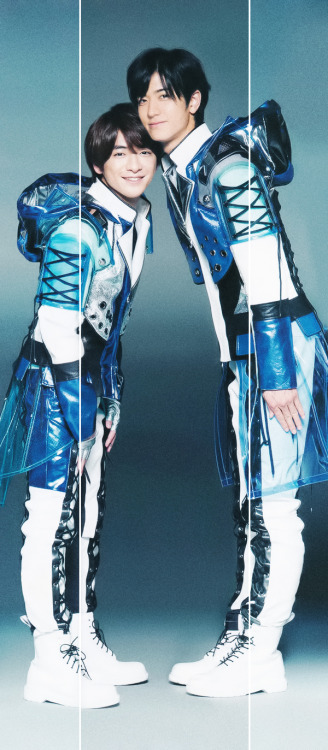#sensation
Everything You Need To Know
“This work sprang originally from my need to define the ways in which my outlook differed from Freud’s and Adler’s. In attempting to answer this question, I came across the problem of types; for it is one’s psychological type which from the outset determines and limits a person’s judgement. My book, therefore, was an effort to deal with the relationship of the individual to the world, to people and things. It discussed the various aspects of consciousness, the various attitudes the conscious mind might take toward the world, and thus constitutes a psychology of consciousness regarded from what might be called a clinical angle.”
- C.G. Jung, Memories, Dreams, Reflections.
Not everybody approaches the world in the same way. In fact, most people seem to differ from each other greatly – sometimes it seems like a miracle that we can even get along at all! In attempting to explore this problem, Jung devised a system of types that – although not as scientifically rigorous as modern personality inventories like the Big 5 or the MMPI – was simple, elegant, and deep. This should be repeated: Jung’s typology, although rooted in practical experience, is intuitive and symbolic in nature. It is meant firstly as a therapeutic tool and not as a strictly scientific theory.
Jung’s typology is made up of six elements. The first are two attitudes: IntroversionandExtroversion. These represent the direction of interest of the psyche and the movement of its energy, whether inwards or outwards. The others are four functions: Thinking,Feeling,SensationandIntuition. These are modes of operation that, between the four of them, roughly encompass your conscious experience. The shorthand goes like this: Sensation tells us that something is there; Thinking tells us what it is; Feeling tells us if it is agreeable or not; Intuition tells us from where it came and to where it might go.
Introversion is an inwards-turning of energy. It’s an orientation that expresses the supremacy of subjective part of life; one’s inner thoughts, feelings, personal experiences, and the deep unconscious*. This does not mean that introverts are always introspective – instead, their relation to the outside world is coloured by their subjective view in such a way that their perceptions and judgements hinge more on their private inner reality than on the shared reality of the objective world. Because their energy moves away from the object (and towards the subject), they tend to be relatively reserved, inscrutable, and shy.
*Footnote to Introversion: The “deep unconscious” here refers to the Collective Unconscious, which is covered in another article. To summarise, the subject isn’t only made up of personal experiences or memories. Just as we all have an inherited body that is only superficially different between individuals, so do we have an inherited psyche that has evolved over millions of years. Introversion relies particularly heavily on inherited, instinctual images and patterns of thought. Pushed to the extreme, these manifest as a mythological or religious quality of thought, since myths are just the collective expression of these inner archetypes through stories.
Extroversion is an outwards-turning of energy. Here the objective part of life is the most important. Extroverts think and act in a way that corresponds more directly to external conditions. They aren’t necessarily perfectly adjusted – extroversion is no guarantee of good social skills, and furthermore, neglecting their inner life often results in grief for the extrovert. However, they are constantly impelled to relate to the outer world in some way, and in turn to be affected by it, whether that means they’re on good terms with everybody, or that they pick fights with everybody. In general they are relatively open, sociable, jovial, or at least friendly and approachable.
The four functions are made up of two pairs of opposites. Sensation and Intuition make up the first pair. These are the “irrational” orperceiving functions. Sensation takes in impressions of the material world via the five senses, which often results in a pragmatic, grounded, or aesthetically-minded personality. Intuition is a subconscious or subliminal perception that, roughly speaking, presents the user with a whole where only a part is objectively visible. This often results in a speculative, flighty, or imaginative personality. Thinking and Feeling are the “rational” or judgingfunctions. Thinking takes a detached, mechanistic view of problems, and seeks to put the world in conceptual or at least logical terms. Feeling recognises and imparts subjective value onto things, deciding whether or not they are agreeable and good.
However, these functions are never developed and used in an individual to the same extent. As a rule, one becomes the person’s primary approach to life – thedominantfunction. Its incompatible opposite is partially repressed as a result. This becomes theinferiorfunction. The two other functions are in a middle-state of differentiation, and therefore are less harshly polarised. One is usually theauxiliaryfunction, which supports and counterbalances the dominant – a functional sidekick. This is not a hard rule, though: both could be auxiliaries, or both could be undifferentiated inferior functions. However, the most common arrangement consists of two conscious functions, the dominant and main auxiliary, and two unconscious inferior functions.
==============================================================

Fig. 1 - A Thinking dominant, Feeling inferior arrangement. The two middle functions, Sensation and Intuition, are halfway between consciousness and unconsciousness. They can be developed auxiliaries or underdeveloped inferiors.
==============================================================
These dominant-auxiliary combinations begin to paint familiar pictures – the practical problem-solver with Thinking and Sensation, the esoteric creative artist with Feeling and Intuition, etc. The inferior function also tends to be recognisable. We all know people who have terrible difficulties with Feeling, or for whom material reality is always a stumbling block thanks to inferior Sensation.
Finally, in any given function type, a certain attitude will also dominate. This attitude does not exist on its own, but applies to the dominant function, so that the Thinking of a Thinking type might actually be Introverted or Extroverted. The opposite attitude, however, is repressed and combines with the inferior function. The middle functions are again in a more mercurial middle state; they often have the capacity to shift either way. This results in a distinct set of types, which are described in my Jung Abridged series.
To recap: Two attitudes, Introversion and Extroversion. Four functions: two perceiving, that is Sensation and Intuition, and two judging, that is Thinking and Feeling. One is dominant and conscious; its opposite is inferior and unconscious. The other two functions can be either conscious auxiliaries or unconscious inferiors. The dominant function has a characteristic attitude; the inferior takes the opposite attitude. Those are the basics – from here you can check out any of my other articles, which deal with many aspects of this schematic in greater depth. Enjoy!
@beautclub is a banging #queer #dance #party at the toff in town on Sunday night. @celesteelectric are creating an #immersive #installation entitled #SENSATION. Enter the #experience with us.
Ropes are instruments used to connect two people, I can feel what you feel. Do you prefer a binding on the floor or a suspension?
#girl #man #ropes #light #domination #Submissions #shibari #bondage #Master #ropebunny #fit #fitlover #black #eyecontact #abs #muscleman #body #control #sensation #love
#mastergiacon #Master #slave #session #feelings #connected #bamboo #bed #fun #Dom
https://www.instagram.com/p/CCnwG5UKTqH/?igshid=h2ic7476oarw
Post link
I deprive your senses to increase your pleasure. How many people have experimented mummification?
#Mummification #Master #blackrubber #deprivation #sensation #upsidedown #domination #gaymaster #gayfetish #alphaman #gayman #gay #pridemonth #leatherfetish #gaymale #gaykink #gaylad #gayhot #leatherpants #gaygear #leatherman #bdsm #sensorialdeprivation #session #slave #playtime #black #leather (presso Bologna, Italy)
https://www.instagram.com/p/CB-hjEsqF6H/?igshid=1cj0v1fx5pnfb
reblog w the song lyrics in your head NOW. either stuck in yr head or what yr listening to
Sensation shapes the soul.
Venezia, il carnevale, i suoi magici colori.
Una ghiotta occasione non solo per chi ama la fotografia, ma anche per chi ama la Vita e la bellezza.
Post link
New favorite no Sox player…Yasiel Puig. Kid is unbelievable!! #yasielpuig #baseball #losangeles #dodgers #rookie #player #crazy #star #sensation #future #mvp #NL
Post link





















